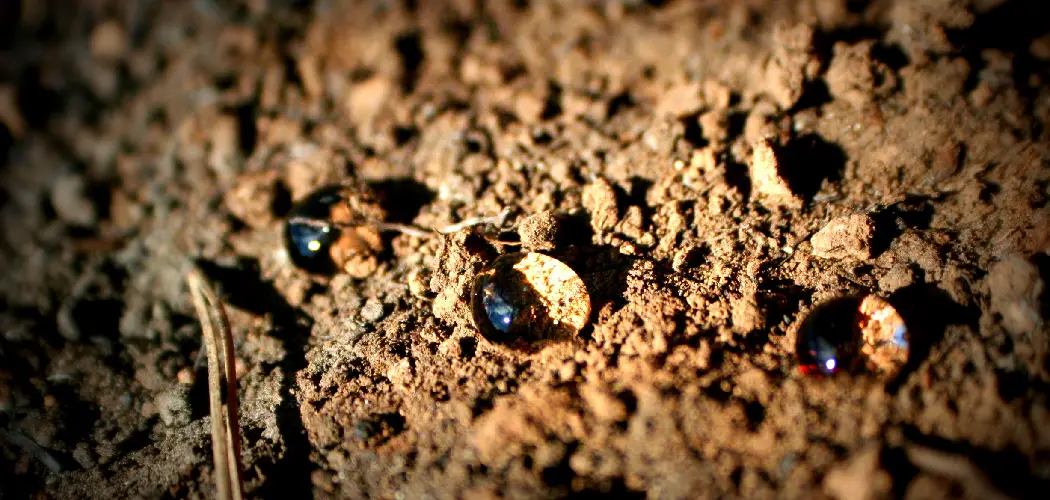Having a garden with healthy soil is essential to maintaining successful crops; however, hydrophobic soil can make it difficult to achieve the perfect environment. Hydrophobic soil is characterized by its inability to absorb water and nutrients; it has an extremely high surface tension, causing water droplets to roll off instead of sinking in.
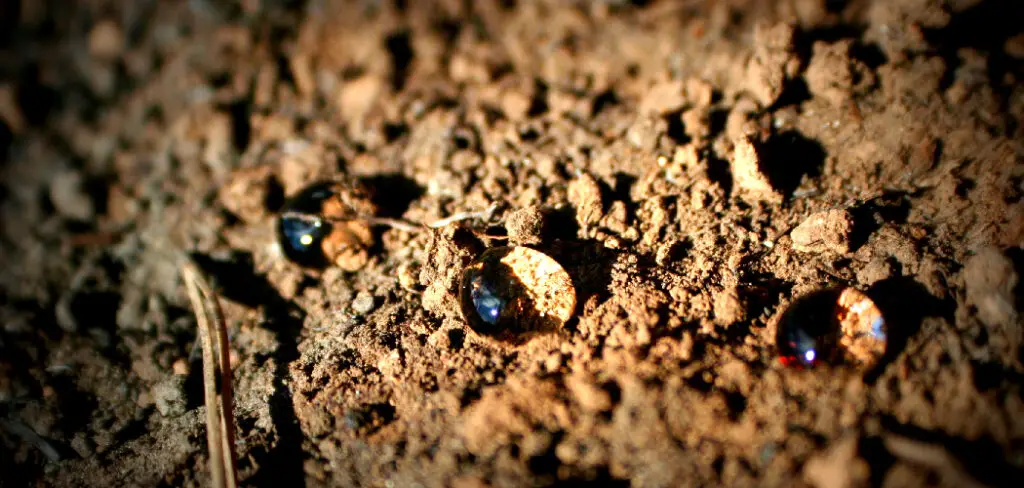
If you are dealing with this type of problem in your garden, don’t worry! We are here to show you how to fix hydrophobic soil – all without breaking the bank! Keep reading for more tips on easily reviving your hydrophobic soil so that your plants will be happy and thriving again.
What Causes Hydrophobic Soil?
Hydrophobic soil, also known as “water-repellent” or “hydrophobicity,” is a condition in which water droplets do not penetrate the soil easily. This prevents the water from seeping into and through the soil to reach its destination.
The main cause of hydrophobic soils is organic compounds, such as waxes and oils, found on the surface of soil particles that decrease the surface tension of water.
This prevents the water from being absorbed into the soil. Other causes of hydrophobic soils include particles that are clumped together due to compaction and poor drainage, which affects their ability to absorb moisture. In some cases, hydrophobic soils can be caused by chemical contamination, such as fertilizers or pesticides.
In addition, some plants may produce natural waxes that can contribute to hydrophobicity.
In order for water to penetrate the soil, it needs to break through the surface tension of the organic compounds and particles on its way down. This is not always possible, resulting in hydrophobic soil.
When this occurs, the water droplets form bead-like structures on the surface of the soil and roll off without being absorbed, carrying away important nutrients and minerals with them.
As a result, plants in hydrophobic soils may experience stunted growth due to a lack of adequate hydration. Hydrophobic soils can also lead to poor drainage and waterlogging, which can create ideal conditions for the growth of pests and weeds.
Fixing hydrophobic soil is not an easy task, but there are several strategies that can be used to reduce its effects. The first step is to determine the cause of the problem. If organic compounds are the culprit, then applying an organic-based soil amendment can help to break down the hydrophobic layer and increase water infiltration.
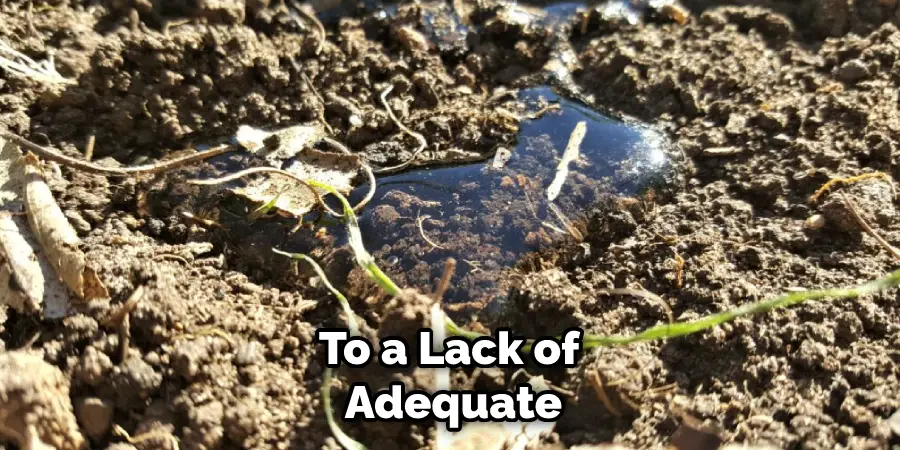
Compaction can also be addressed by incorporating gypsum or lime into the soil to improve its structure. Finally, proper drainage must be established in order for any of these changes to take effect.
10 Methods on How to Fix Hydrophobic Soil
1. Addition of Amendments
One method of fixing hydrophobic soil is to add amendments to the soil. Amendments are materials that are added to soil to improve its physical properties, such as its drainage, aeration, or nutrient-holding capacity. Common amendments that can be used to improve hydrophobic soils include sand, compost, and perlite.
The amendments should be added in the right proportion, as too many amendments can also cause drainage problems. While adding amendments, it is also important to mix them thoroughly with the existing soil, as this will help ensure that the amendment particles are evenly distributed throughout the soil.
2. Incorporation of Organics
Another method of fixing hydrophobic soil is to incorporate organic matter into the soil. Organic matter is plant or animal material that has decomposed and can be used as a source of nutrients and water-holding capacity for plants. Incorporating organic matter into hydrophobic soils can help to improve their drainage and aeration.
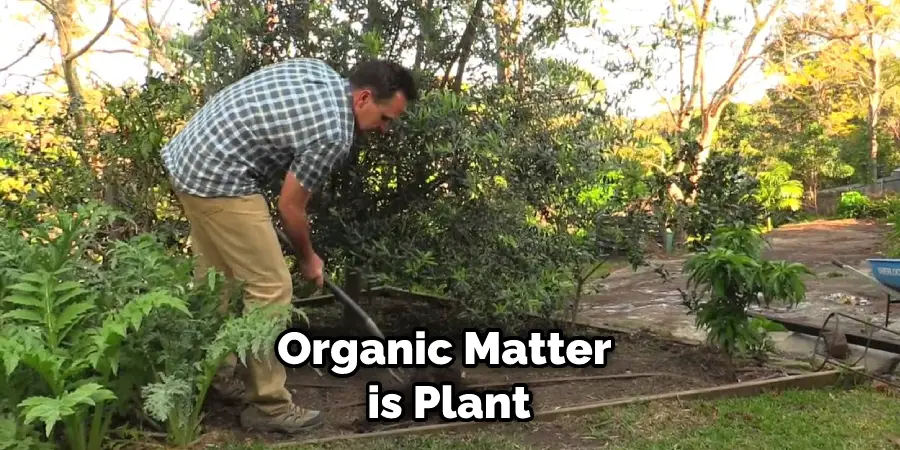
This can be done by adding compost, manure, or other types of organic matter to the soil.
Organic matter helps to increase the number of available nutrients to plants and can also help improve the soil’s structure, allowing for better drainage.
Additionally, it can help to reduce the amount of surface tension in the soil, making it easier for water to penetrate the surface. By incorporating organic matter into hydrophobic soils, you can improve their drainage and aeration, which in turn can help to make them more conducive to growing healthy plants.
3. Use of Wetting Agents
Wetting agents are chemicals that can be added to hydrophobic soils to help them retain moisture. Wetting agents work by reducing the surface tension of water, which allows it to penetrate the soil more easily. Wetting agents are available in both liquid and granular form and can be applied using a sprayer or spreader.
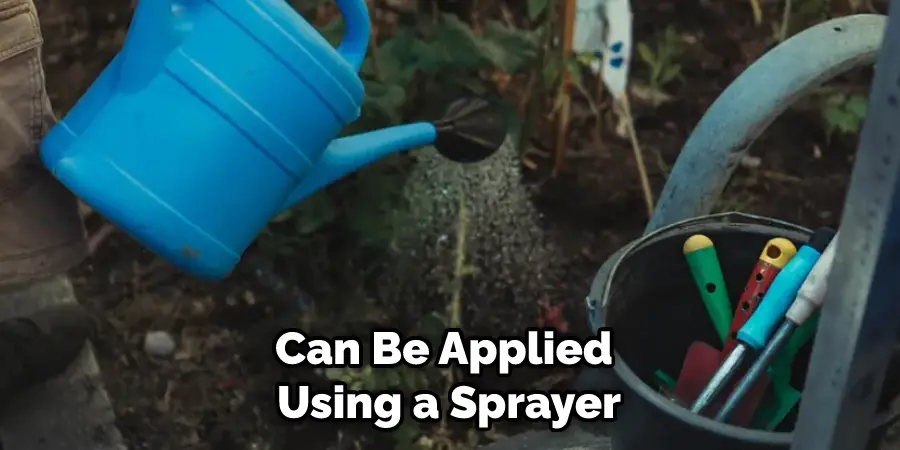
Depending on the type of wetting agent used, it may be necessary to re-apply after heavy rain or extended periods of dry weather.
When using wetting agents, it is important to follow the manufacturer’s instructions carefully, as excessive amounts can cause root damage and other issues. Additionally, some wetting agents can be toxic to plants, so it’s best to use products specifically designed for soil amendment.
Once applied, wetting agents can work quickly to improve the water-retaining capacity of hydrophobic soils.
4. Mechanical Aeration
Mechanical aeration is a process that involves mechanically breaking up the soil to improve its drainage and aeration. Aerating hydrophobic soils can help water and air to move more freely through the soil and improve plant growth. Aeration can be accomplished with a variety of tools, including rototillers, core aerators, and hand trowels.
It is important to note that mechanical aeration should be done with care and not excessively, as it can cause compaction of the soil and reduce its water-holding capacity. Additionally, mechanical aeration should be done at the appropriate time of year to minimize disruption of plant roots and reduce compaction.
5. Use of Gypsum
Gypsum is a type of calcium sulfate that can be added to hydrophobic soils to improve their drainage. Gypsum works by helping clay particles bind together, which prevents them from absorbing water. Gypsum is available in both powder and pellet form and can be applied using a spreader or broadcast seeder.
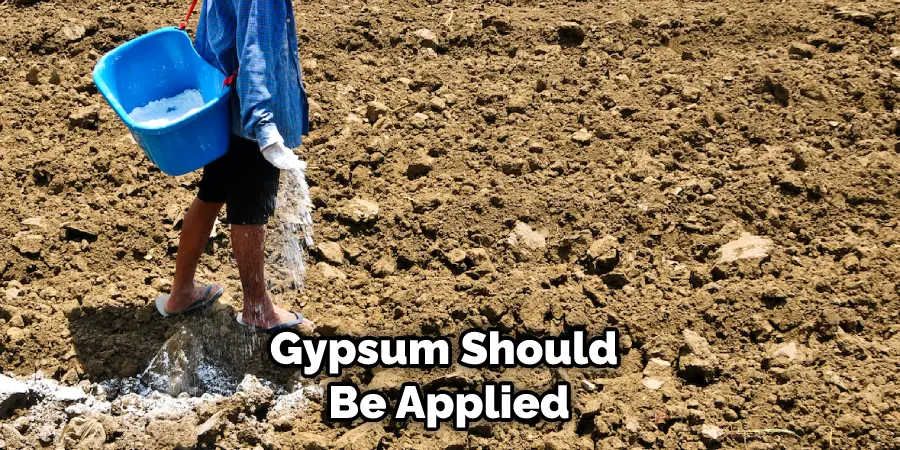
Gypsum should be applied at least twice a year for optimal results. The amount of gypsum to apply will depend on the soil’s texture and clay content, so be sure to consult with a soil specialist before applying gypsum. Additionally, it’s important to note that gypsum cannot improve soils with a high organic content, and it can cause problems if used in excess.
6. Amending Soil pH
Soil pH is a measure of the acidity or alkalinity of soil and can affect plant growth. Hydrophobic soils often have high pH levels, which can make it difficult for plants to uptake nutrients from the soil. Adding amendments to lower the pH level of hydrophobic soils can help improve plant growth.
7. Use of Cover Crops
Cover crops are plants that are grown on top of the soil to protect it from erosion and provide nutrients for future crops. Cover crops can also help improve the physical properties of hydrophobic soils by adding organic matter and improving drainage. Common cover crops used for this purpose include ryegrass, clover, and vetch.
8. Application of Mulch
Mulching is the practice of covering the soil with a layer of organic material, such as bark chips or straw. This helps to prevent water from evaporating and also improves the physical properties of hydrophobic soils by adding organic matter and improving drainage. When mulching hydrophobic soils, it is important to use a light but thick layer of mulch.
Too thin of a layer will not provide enough coverage to be effective, and too thick of a layer can prevent air and water from penetrating the soil. Additionally, it is important to keep mulch away from the base of plants to prevent root rot.
It is also important to avoid over-mulching as this can lead to anaerobic conditions in the soil, which can further exacerbate the hydrophobic nature of the soil.
9. Irrigation Management
Irrigation is the process of providing water to plants to meet their needs. Irrigating hydrophobic soils can help improve their drainage and aeration by creating channels for water to move through the soil. The amount and frequency of irrigation will depend on the type of plants being grown and the climate in which they are planted.
10. Proper Drainage
Proper drainage is essential for preventing hydrophobicity in soils. Installing drains or improving existing ones can help prevent waterlogging and improve the drainage of hydrophobic soils. Additionally, grading the soil away from any structures can help to ensure that water drains away from them rather than pooling around them.
These are just some of the ways to fix hydrophobic soils.
With a combination of amendments, organic matter incorporation, wetting agents, mechanical aeration, gypsum application, soil pH adjustment, cover crops, mulch application and proper drainage techniques it is possible to improve the physical and chemical properties of hydrophobic soils. Taking these steps can help
Conclusion
There are many ways that you can improve hydrophobic soil. You can start by working on the drainage and aeration of your soil. Adding organic matter to your soil can also help to improve its structure.
If you have hydrophobic soil, there are a few things that you can do to fix it. With a little bit of effort, you can have healthy, thriving plants in no time! Thanks for reading our blog post on how to fix hydrophobic soil! We hope you found it helpful and informative.
About
Outdoor Fixes is a distinguished figure in the world of Diy design, with a decade of expertise creating innovative and sustainable Diy solutions.
His professional focus lies in merging traditional craftsmanship with modern manufacturing techniques,
fostering designs that are both practical and environmentally conscious. As the author of diy,
outdoorfixes delves into the art and science of outdoorfixes-making, inspiring artisans and industry professionals alike.
Education RMIT University
(Melbourne, Australia) Associate Degree in Design (Outdoor Fixes) Focus on sustainable design, industry-driven projects,
and practical craftsmanship. Gained hands-on experience with traditional and digital manufacturing tools, such as CAD and CNC software.
Nottingham Trent University
(United Kingdom) Bachelor’s in outdoorfixes.com and Product Design (Honors) Specialized in product design with a focus on blending creativity with production
techniques. Participated in industry projects, working with companies like John Lewis and Vitsoe to gain real-world insights.
Publications and Impact
In diy, Outdoor Fixes his insights on indoor design processes, materials, and strategies for efficient production.
His writing bridges the gap between artisan knowledge and modern industry needs, making it a must-read for both budding designers and seasoned professionals.

